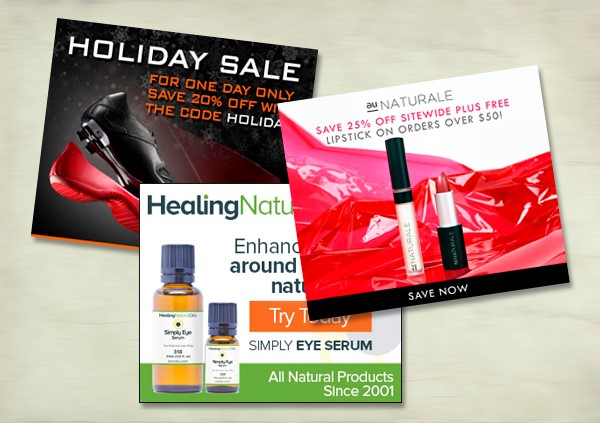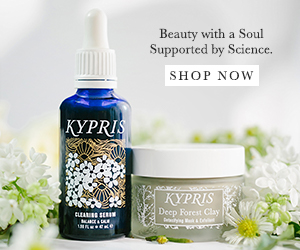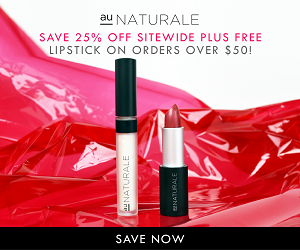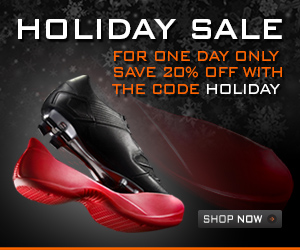Before I begin my recommendations on creating effective banners for celebrating birthdays, let me address the elephant in the room: no, affiliate banners are not dead. I hear this frequently and it surprises me each time. Do affiliate banners on non-related sites convert to sales? Absolutely not, and if you still have banner farms (sites with only banners and no content) please take them down immediately. However, a well-done affiliate banner on a niche site does convert and provides a great baseline of passive affiliate revenue into your program.
I am not trying to say your banner conversions will surpass, or even come close to, your text link conversions. Text links within relevant content reigns for conversions. However, to omit banners entirely would reduce supporting branding opportunities and passive revenue income for your program and the affiliate.
Ok, now that we have that cleared up, let’s move forward with my recommendations for affiliate banners that convert for your program.
Know Yourself
When creating specs for affiliate banners, the first item on my list is to ensure whoever looks at your banner knows exactly who you are. Remember, your banner will be along side other brands that, hopefully, aren’t in your category. As such, include product images that clearly illustrate what you are trying to sell. Affiliate banners are not the time to go out of the box with abstract images. If you sell cosmetics, include a picture of lipstick, eyeshadow and mascara. If you can include multiple product lines (think eyes, lips and face), that’s even better. Skip the lipstick swatch image. That’s for your affiliate to use in their post body. If you sell food, include an image of your package and a clear CTA. Why should someone by it? Is it gluten-free? Vegan? Paleo? You get the point. Make it obvious because you are looking to convert a quick glance into a click.
I know you spent a lot of time creating a logo that represents your brand. I absolutely want you to include your logo on your banner. However, understand that, unless you are a well-known brand like Target or Crate and Barrel, your product image is more important.
Below is an example from Au Naturale on a theme-focused banner. This New Year’s banner focuses on consumers looking to reduce their chemical intake.
Stand Out From The Crowd
Your banner should be clean, flexible AND stand out from the crowd. I know this is a tall order for a space as small as 300×250 pixels, but it makes all the difference. Use eye-catching images, but avoid the temptation to animate it. A quality site won’t accept animated banners because content is king, and animation is distracting. Create a banner that has clean lines, a striking image and will compliment your affiliate’s site.
Since you do not know where your banner will live, I recommend including a border on banners with a white background, so your banner does not blend into an affiliate’s site. Most quality affiliate sites have white backgrounds.
Make Your Call to Action Obvious
As affiliate managers, we live online. To us, it is intuitive that every banner is clickable and has a call to action. However, your consumers may not be as savvy, so you need to make what you want them to do very obvious with click-worthy calls to action.
Here are three tips for creating a call to action that delivers:
- Use Buttons – Yes, that Shop button really does work. When I tested banners with a Shop button versus a Learn More, I received up to 50% more clicks from banners with the Shop button
- Keep It Bright – Create a button that is eye-catching color and consistent with your branding
- Limited The Offer – Give the follower a reason to click immediately. Create a sense of urgency with a limited time or a ‘while supplies’ last offer
Pay Attention to Size
The most commonly used and clicked on banner for my affiliate programs is the 300×250. If the affiliate only allows placement of one banner, which sometimes happens, I always request that size. Many WordPress templates include a sidebar banner widget designed specifically for this sized banner. Followers are used to seeing banners in this spot. Additionally, it is easy for influencers to integrate 300×25 into their existing site. When allowed, these are the two additional banner sizes I request:
- 160×600
- 728×90
Know where your sales are coming from
If you have heavy mobile traffic and sales, be sure to include the following mobile banner sizes.
Think outside the banner
In addition to creating banners for my affiliates, I also provide larger product focused images for blog posts. Product images are incorporated into the content and therefore result in higher conversions. It also reminds affiliates to make post images clickable to increase sales. This opportunity is often overlooked. These product images are typically 500 pixels in width to accommodate most blog templates. Square banners are popular due to scalability on the affiliates’ part. Below are images I provide for Healing Naturally Oils.
Make It Easy For Your Affiliates
In my favorite networks, ShareASale and AvantLink, I have the option to update banners versus creating new banners. If the affiliate uses the complete code for the banner, versus downloading the image and creating their own link, the banners automatically update on their site with the current and best promotion. This is a true blessing especially during the holidays when limited time sales are abundant. It is also a great way to update and test your banners for effectiveness. In addition, the auto update is fabulous for new product launches. Affiliates love this option because it does not require additional time on their part and provides the highest converting promotion on their site.
Do you still use banners or are you only providing text links? What are your best tips for creating effective affiliate banners?





